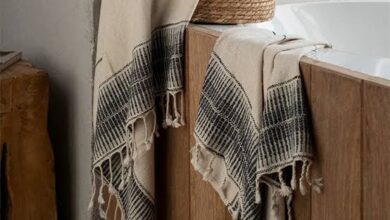The Role of Technology in Revolutionizing Abaya Production

Clothing has always been an extension of culture, identity, and self-expression. Nowhere is this more evident than in the Middle East, where the abaya, a symbol of modesty and elegance, holds both cultural and religious significance. While its roots are steeped in tradition, the process of making abayas has undergone a remarkable transformation over the years, thanks to advancements in technology. In particular, Dubai has become a hub for innovation in abaya production, blending heritage with modernity to create garments that are both functional and stylish.
Abayas of the Past: Handcrafted Elegance
Historically, abayas were handcrafted by skilled artisans who relied on traditional methods to produce these garments. The process was labour-intensive and time-consuming, involving meticulous hand-stitching, embroidery, and dyeing. Fabrics like silk, cotton, and wool were sourced locally or from nearby regions, and the designs were often simple but elegant, reflecting the cultural values of modesty and grace.
In the past, the embellishments on abayas were minimal, often limited to hand-sewn beads, tassels, or delicate embroidery. These designs required hours of manual labour, with artisans often passing down their skills through generations. While these methods ensured that each abaya was unique and crafted with care, they also meant limited production capacity and accessibility.
The Rise of Technology in Abaya Production
The fashion industry, like many others, has embraced technology to enhance efficiency and creativity, and abaya production is no exception. Today, advanced machinery, digital design software, and innovative materials are revolutionizing how abayas are made, allowing designers to push creative boundaries while meeting the growing demand for these garments.
1. Automated Fabric Cutting and Sewing Machines: Modern factories in Dubai and beyond use automated cutting machines to ensure precision and reduce fabric waste. Sewing machines equipped with programmable features can replicate intricate patterns with consistency and speed, significantly reducing production time.
2. Digital Embroidery: Technology has transformed embroidery from a painstaking manual process to a streamlined, computer-controlled operation. Designers can now create intricate, multi-coloured patterns with ease, allowing for more elaborate designs that were once unimaginable.
3. Sustainable Fabrics and Production Techniques: Advances in textile technology have introduced sustainable and innovative fabrics like breathable microfiber, bamboo blends, and wrinkle-resistant polyester. These materials not only enhance comfort but also align with modern eco-conscious values.
4. 3D Printing: While still emerging, 3D printing offers exciting possibilities for creating unique embellishments and accessories for abayas. This technology allows for intricate, custom-made designs that blend seamlessly with the garment.
Abayas in the Digital Age
Dubai has positioned itself as a leader in integrating technology into fashion, with many brands leveraging digital tools to enhance their offerings. Virtual design platforms enable designers to create and modify patterns in real time, while augmented reality (AR) allows customers to “try on” abayas virtually before purchasing.
E-commerce platforms and social media have also played a significant role in making abayas more accessible. Customers from around the world can now explore and purchase beautifully crafted abayas from Dubai, bridging the gap between tradition and global fashion trends.
Bridging Tradition and Innovation
Despite these technological advancements, the essence of the abaya remains rooted in its cultural significance. Many designers in the Middle East strive to strike a balance between honouring traditional craftsmanship and embracing modern methods. For example, while machine embroidery may replace hand-sewing, the designs often draw inspiration from age-old patterns and motifs.
In conclusion, technology has transformed the way abayas are produced, making them more accessible, sustainable, and innovative while preserving their cultural identity. Dubai’s abaya industry exemplifies how tradition and modernity can coexist, creating garments that honour the past while embracing the future. As the industry continues to evolve, the abaya remains a timeless symbol of modesty and elegance, enriched by the possibilities of technology.




